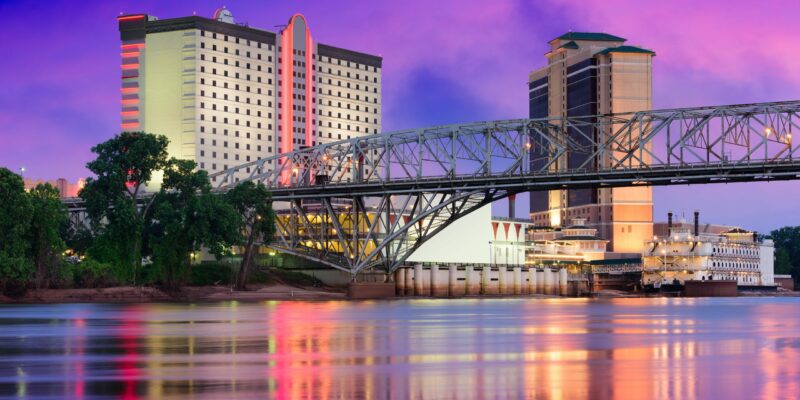Tax increase? Pull up the ladder? More sensible regulation? Do nothing? The Bossier Parish Police Jury still can’t make up its mind about how to deal with something it can’t decide is even a problem demanding swift, if not far-reaching, action.
That sums up a public meeting the Jury called this week, followed on by its regular meeting where it addressed whether to continue a residential building moratorium roughly in the northern part of the parish (in the areas in which it has jurisdiction, or outside of municipalities). The halt was first triggered last year—over a somewhat larger area—after the inventory of permits issued to builders had spiraled well into the thousands. In fact, in the current area, the estimated number of proposed lots has hit about 5,000, with thousands more outside it, mainly in the Haughton area.
The moratorium doesn’t prevent builders with permits from constructing on that land as long as they install the required infrastructure. Bossier Parish operates on an impact fee regime, meaning builders must pay for infrastructure additions as specified in its building code. Moreover, the moratorium on new permits applies only to residential units; commercial and other zones remain unaffected.
To start, it’s helpful to understand why so many permits lie fallow at this time, which is a product of both the parish’s codes and market forces. As came out in the public meeting, a prevailing sentiment among builders is that the parish’s codes are too strict, such as requiring subdivision roads to hold up under far heavier traffic loads than they will realistically encounter.
A requirement like this means that maintenance will be reduced and thus reconstruction pushed off farther into the future, saving the parish money. But it also diminishes the incentive to build, since a developer has higher upfront costs. This skews development toward higher-end homes, as their selling price allows for a greater absolute profit margin to compensate for increased infrastructure costs.
That’s one reason permits have stacked up without construction. The other is what development has occurred has started to strain the roads system. Congestion diminishes home values and makes buyers more hesitant. Indeed, beyond the permit inventory, another motivation behind the moratorium is resident complaints that additional construction will further tax the road system. At the meeting, more than one speaker opined that adding more housing would degrade their quality of life—a kind of scramble over the walls into Fortress North Bossier, followed by pulling up the ladder to prevent others from doing the same.
Avoiding further congestion presents daunting numbers. Parish officials estimate that if all 5,000 permitted homes are built, they would require $75 million to $100 million in road improvements just to handle the increased traffic. For perspective, in 2023, the parish spent about $24 million on its entire road system, including the newly opened Veterans Parkway, which had its own dedicated fund in addition to the Highway Fund that typically spots dough for roads.
Regular Highway Fund dollars—about two-thirds of which come from the 1995 1.5 percent sales tax levied outside municipalities—propped up a small portion of the $40 million spent on the Parkway. However, debt payments for that project will strain the fund for years to come, as borrowing covered about half its cost. Considering that these funds must cover not just future upgrades but also the maintenance of existing roads, the prospect of thousands of additional homes portends serious fiscal stress.
This led Parish Attorney Patrick Jackson to subtly hint that a property tax increase for roads may be necessary. Currently, property taxes generate just under a tenth of all Highway Fund revenues, though the rate was recently increased slightly to 1.95 mills as part of a tradeoff that lowered library property tax rates. Had voters not narrowly rejected a property tax hike in 2006, the parish would now be collecting an additional $5.2 million annually for roads (for my small role in helping defeat that measure by forcing the parish to play by its own electioneering rules, see here).
Still, the parish has managed to build enough roads thus far by securing state and federal grants, meaning one solution would be to continue that approach and hope for further success—though it remains uncertain whether that alone will be sufficient.
At its core, the problem is self-regulating: you can spew out permits like losing lottery tickets, but as long as the regulatory environment and congestion fears make turning an adequate profit difficult, developers won’t cash them in by building houses.
But another approach is worth considering. More residents would mean more sales tax revenue—the Highway Fund’s primary funding source. Since the passage of the 1.5 percent sales tax, all parish sales tax collections have increased by a factor of 13, while the parish population has grown only 30 percent. Two additional sales tax elections have since added another 0.75 percent to the rate, further boosting revenues. It’s possible, then, that increased economic activity from a growing population could float the bill for necessary road improvements, making a lighter regulatory touch the more logical choice to kickstart building.
That could also have another beneficial effect: increasing the incentive to build more affordable housing that better meets parish needs. The current regulatory regime favors high-cost properties, which is good for tax collection—except that there are only so many high-paying jobs within a reasonable commuting distance to support such development. Like it or not, Bossier Parish remains mostly a bedroom community. Its largest employers are overwhelmingly government-related, while the top private-sector employers—casinos and healthcare providers—are mostly located outside the parish.
In other words, people have to commute for work, and that means more congestion. This is especially true for north Bossier, which has next to no major employers aside from small service businesses and low-margin operations like grocery stores. Ultimately, there aren’t enough high-paying jobs nearby to sustain high-end home development at the level needed to fund road expansion, and lower-end development—while better suited to the job market—would only compound the congestion problem.
And tax increases won’t solve the issue. Hiking taxes discourages development, so the Jury may not even need extra revenue (though jurors would certainly take it in a heartbeat if voters allowed it).
Finally, keep in mind that all this is not reality, but projection. While congestion may have begun to emerge as an issue, it will remain minor if new development remains limited. Market forces have a much better track record in anticipating actual issues than does central planning.
In the final analysis, the best course of action is to let the moratorium lapse and reduce regulations—then let the market decide. At present, that likely means minimal building due to congestion concerns. Over the next few years, the Jury could continue seeking grants to alleviate traffic issues while also shifting tax and spending priorities. Once infrastructure catches up, development—particularly at the more affordable end of the market—would accelerate, boosting economic activity and sustaining road improvements over time.
Parish officials have indicated that during the moratorium—unanimously extended for another three months into early June—they will collect data on the issue. That’s all the delay needed to assess traffic patterns and revise the development code to reflect more realistic building requirements. The parish stands its best chance of prosperity by reducing government’s heavy hand, resisting the instinct toward central planning, and letting the market decide.
Advertisement
Advertisement

